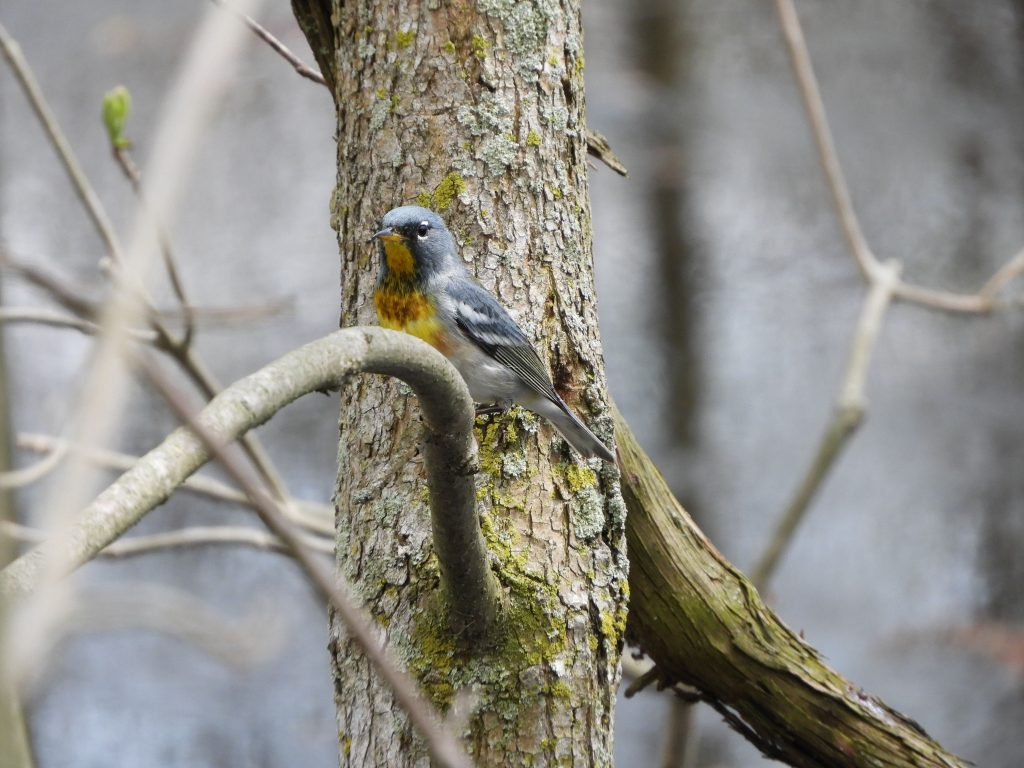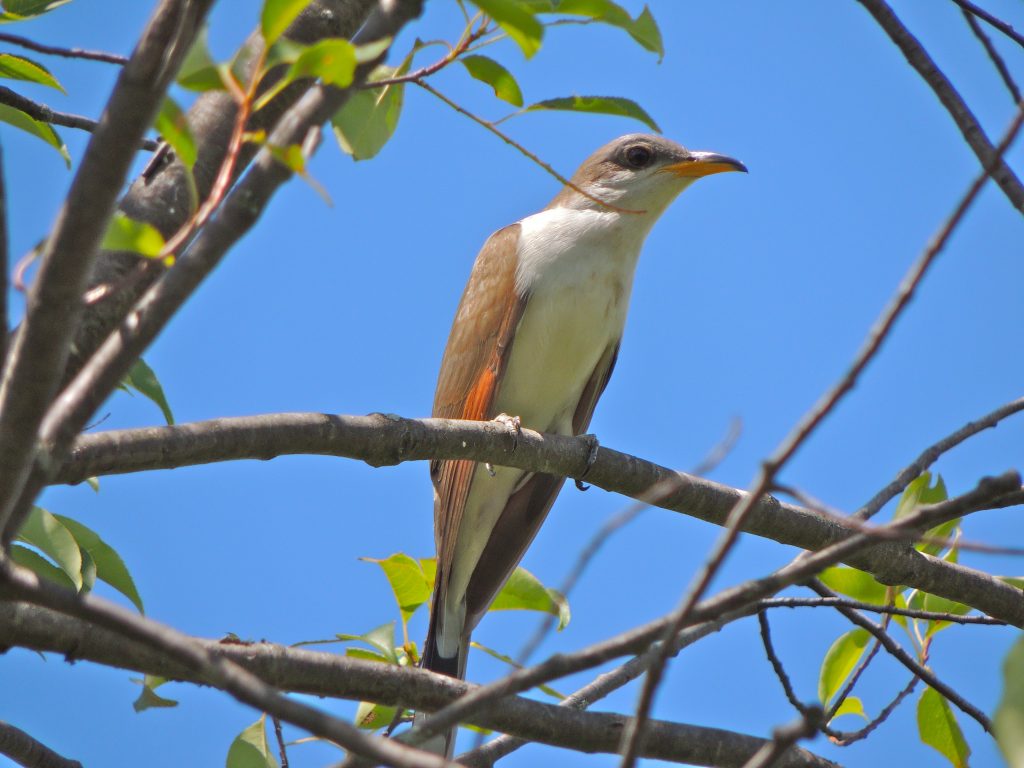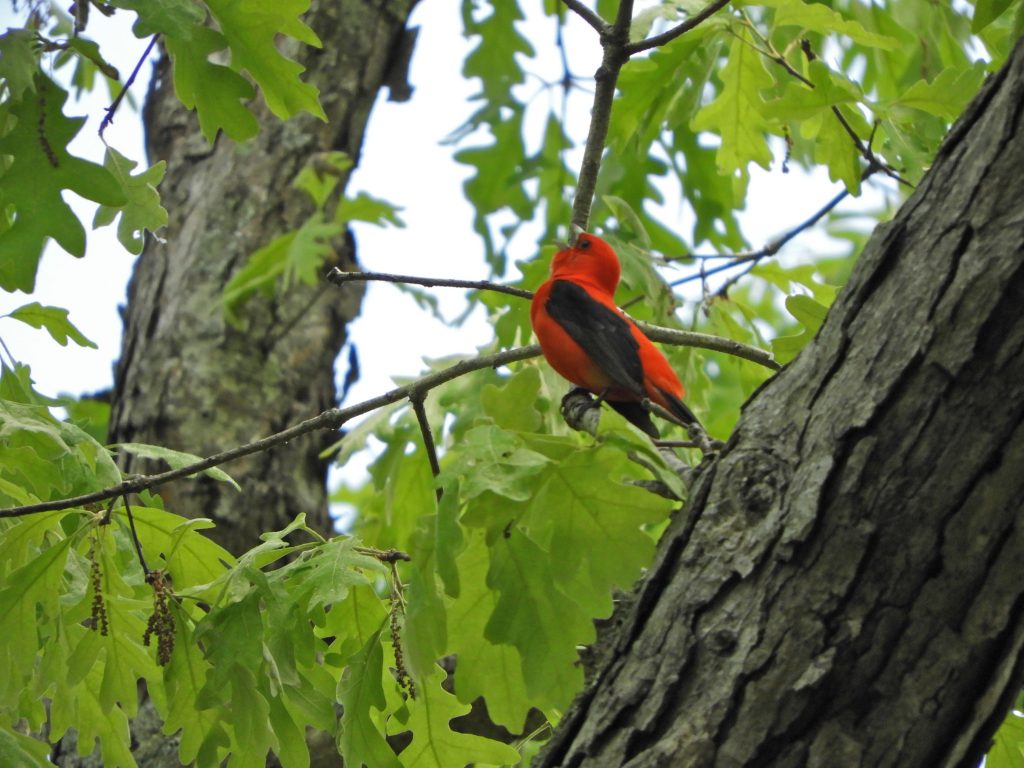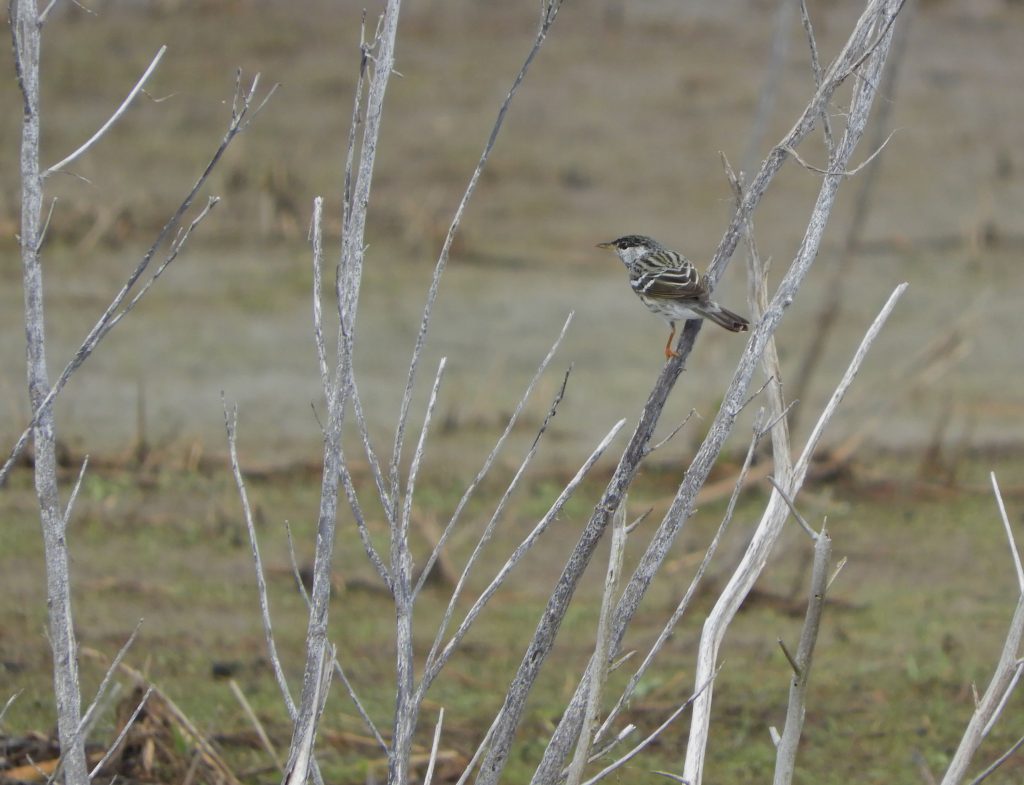May 23 2018, Belleplain Forest, NJ. We decided to spend the freshness of morning listening and looking for woodland birds. Belleplain Forest is rich, lush and green with fast flowing creeks and occaisional areas of standing water. I’m sure it has all been logged at one time, maybe several times; as virgin forest it must have been towering cathedral of a place.
We started early and made really good progress hearing very vocal Red-eyed Vireos, Great-crested Flycatchers and Ovenbirds as we drove. And when we did stop my companion Lyn picked up the zzzzziPPP of a Northern Parula. I couldn’t catch on to it however much I tried, there’s a puzzling gap in my hearing because I could hear other species she assumed I’d miss.

At a couple of roadside stops, chosen for no particular reason other than the forest was a bit swampy we also found Prothonotary, Yellow-throated, Pine, Blackpoll, Bay-breasted and Hooded Warblers, Blue-Gray Gnatcatchers, Carolina Wren and Brown Thrasher.

A large public campground with a lake, sports field and scattered open campsites offered a lot of different habitat. We heard, searched for and triumphantly found a Yellow-billed Cuckoo skulking in the lower tangles of Mountain Laurel; a first-ever for Lyn after many years of trying. We were hoping to find a reported Worm-eating Warbler but got distracted by the distant song of a Scarlet Tanager. Like the cuckoo, we listened; we searched and eventually found it. Stunning is an over-used adjective but I think it arguably applies in the case of the Scarlet Tanager; surely the hot scarlet would render senseless someone of a delicate disposition. It was my Bird of the Morning despite some tough competition, here it is.

We’d set aside the morning for the forest birds because they tend to be more active and vocal before noon; it was the right decision. The afternoon was spent at Brigantine National Wildlife Refuge (Drearily re-named the Edwin B. Forsythe National Wildlife Refuge) and it was about as different an event as is possible and the birding was every bit as good. It was a sandwich of experiences because you start at the woodsy, dry-land end, make your way slowly around a twelve kilometer loop trail elevated above an expanse of saltmarsh until the last kilometer brings you back through open fields and forest.
I think Brigantine is as much about the setting as the bird life. In the foreground are the silent salt marsh expanses with Dunlin, Short-billed Dowitchers and Ruddy Turnstones picking over the mudflats. In silent contrast, rising from the heat haze far to the south, stands the post-modern skyline of Atlantic City, a geometric wall of shiny glass and steel.
Perhaps our most surprising bird here was a Blackpoll Warbler, which we disturbed on the edge of the road. It sprang from dense undergrowth and hung to the side of a scrubby willow while we tried to understand what on earth we were looking at: a small upside-down and sideways bird, black and white with orange streaks. It sorted itself out and the penny dropped, Blackpoll Warblers are black and white and have orange legs and feet. We followed it for a while as it foraged in the scrubby margins. I still wonder why a Blackpoll Warbler was there; far from the sort of treed cover I assume it needs, Bird of the Afternoon for me but Lyn had better to come, she was on the right side of the car to see a Saltmarsh Sparrow quite clearly. For my part it was no more than a fast moving little bird flying low from right to left across the road.

Brigantine filled the afternoon with great birds, a sandwich including Willow Flycatcher, Barn Swallows, Snowy Egrets, Glossy Ibises, Black Skimmers, an American Oystercatcher sitting on eggs at the roadside, a Prairie warbler and a Bald Eagle.